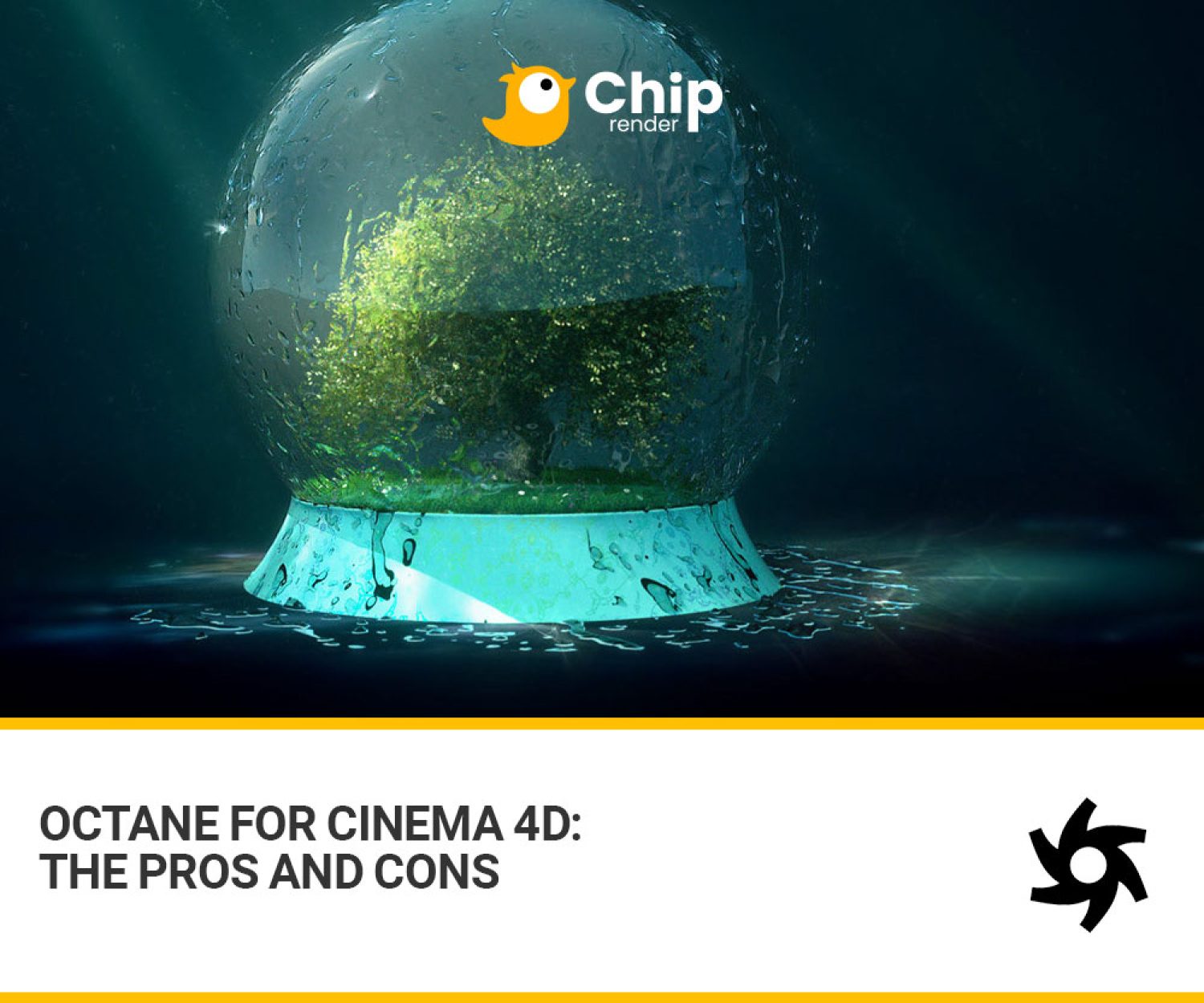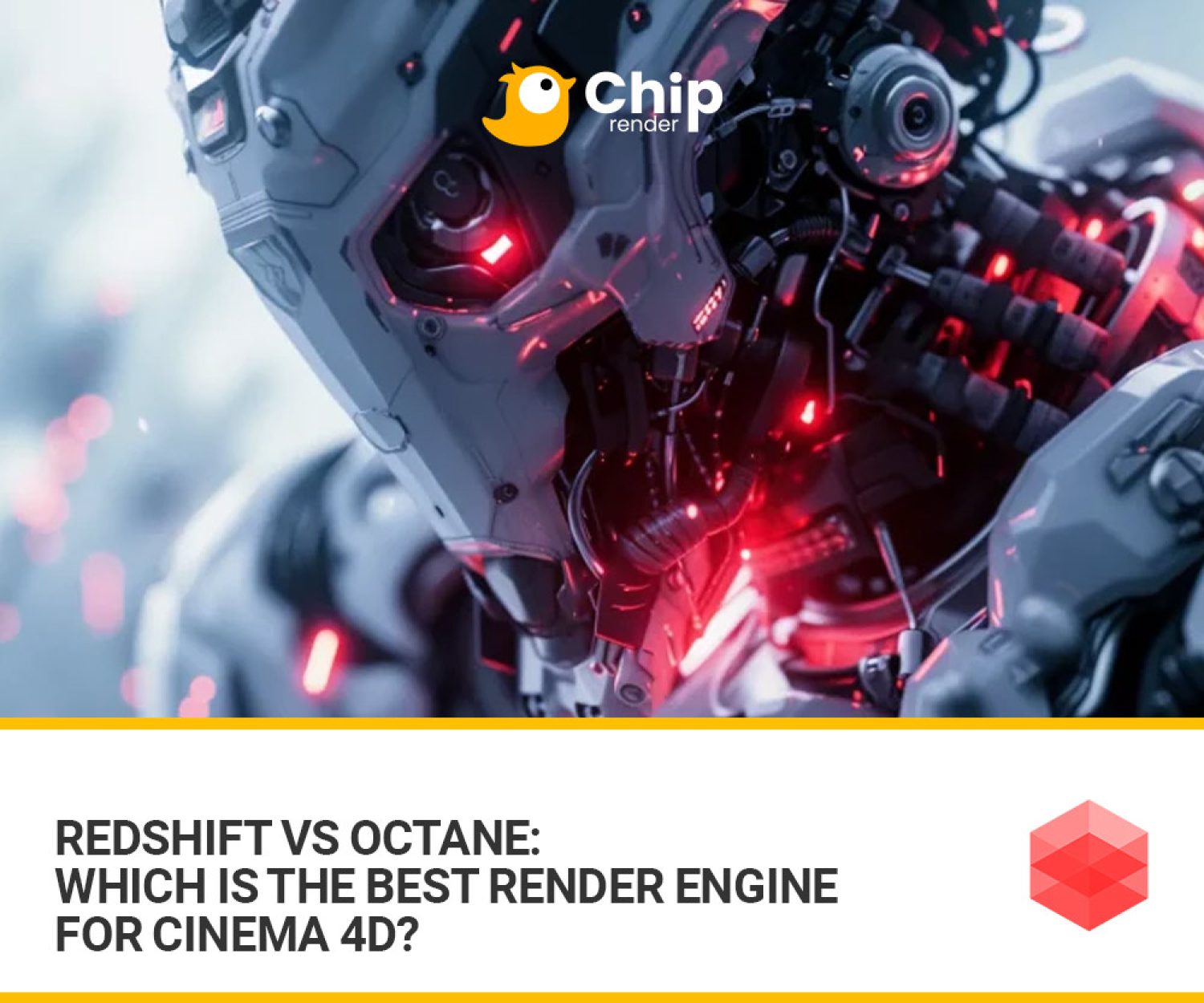Discover what’s new in Octane 2024.1.
In November 2023, Otoy presented a sneak peek into Octane 2024 across all platforms. This early release showcased exciting features such as per-light denoising, custom OSL AOV post and comp shaders, network rendering between Metal and CUDA devices, and hardware acceleration ray tracing tailored for M3 GPUs. The preview hinted at a dozen of significant features for the 2024 release cycle, including meshlets, neural rendering, temporal real-time denoising, light field baking, and Material X support.
In this post, Chip Render takes a closer look at What’s new in Octane 2024.1, and what you can expect from Octane 2024.x version this year.
What's New in Octane 2024.1?
In November 2023, Otoy released the first public preview of Octane 2024.1, with a lot of new features, including:
- New Post FX Shader Graphs: The AOV compositor fully supports Texture Nodes and OSLshader nodes.
- Powerful Denoiser AOV Nodes and filter graphs (GPU and CPU).
- New Geometry Pipeline: Less memory, more performance.
- Significant hardware ray-tracing improvements on both CUDA and Metal.
- A smaller geometry memory footprint.
- The mixed platform network rendering between CUDA and Metal GPUs.
Powerful Denoiser AOV Nodes and filter graphs (GPU and CPU)
Octane introduces powerful Denoise AOV Nodes and filter graphs that seamlessly operate on both GPU and CPU. Adapted from the Open Image Denoise framework, these new nodes are equipped to denoise any Render AOV pass, providing you with the flexibility to craft robust and detailed denoising filters within any composition AOV output graph. This functionality extends to various applications, including per light, per beauty pass denoising, and OSL-driven denoising effects.
Whether you’re utilizing the PMC and Info kernels or working with different AOV outputs, Octane’s Denoise AOV Nodes offer comprehensive support.
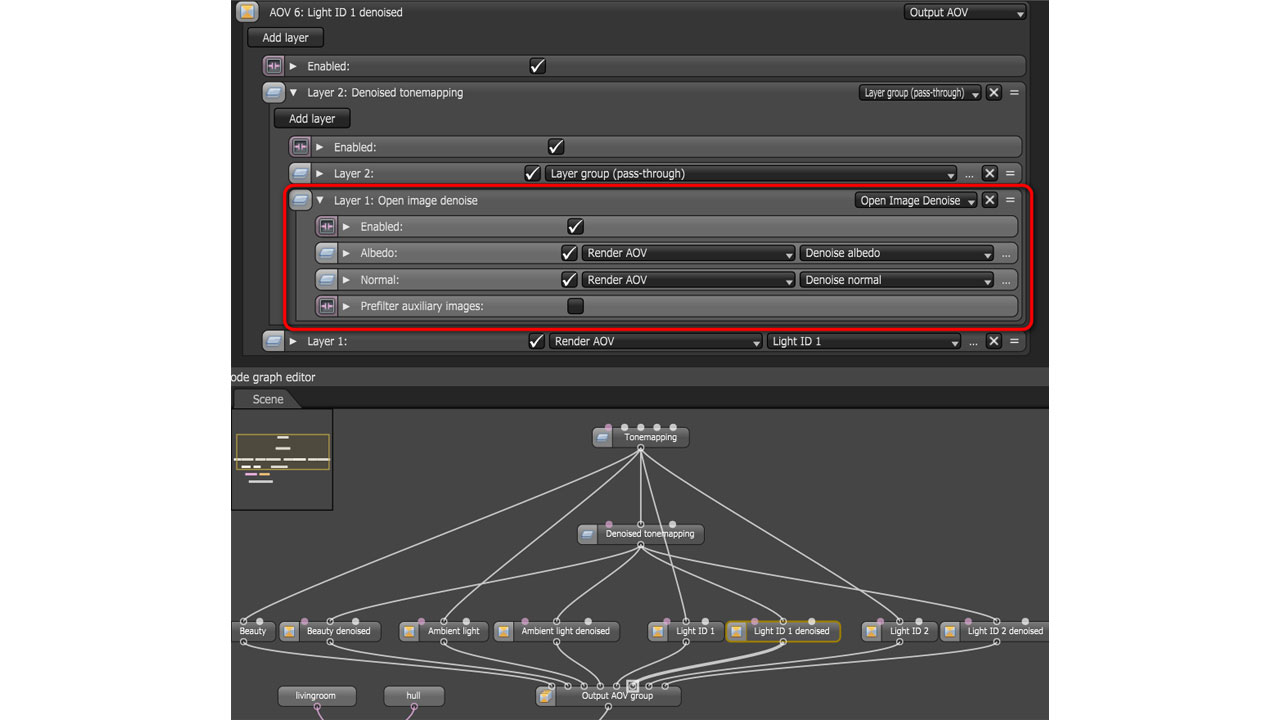
New Post FX Shader Graphs
Octane 2024.1 introduces an exciting feature “Post FX Shader Graphs”. This update brings full support for Textures and OSL shader nodes in the AOV compositor.
Now, you can seamlessly integrate any texture into your output AOVs using the innovative “Texture” output AOV layer node. This feature supports a spectrum of options, from individual image files to intricately designed node trees, allowing for unparalleled flexibility. Embrace the power of OSL textures to create custom effect layers and leverage image generators for dynamic compositing. The addition of the “Output AOV parameter” texture node further enriches your toolkit, enabling the construction of effect layers.
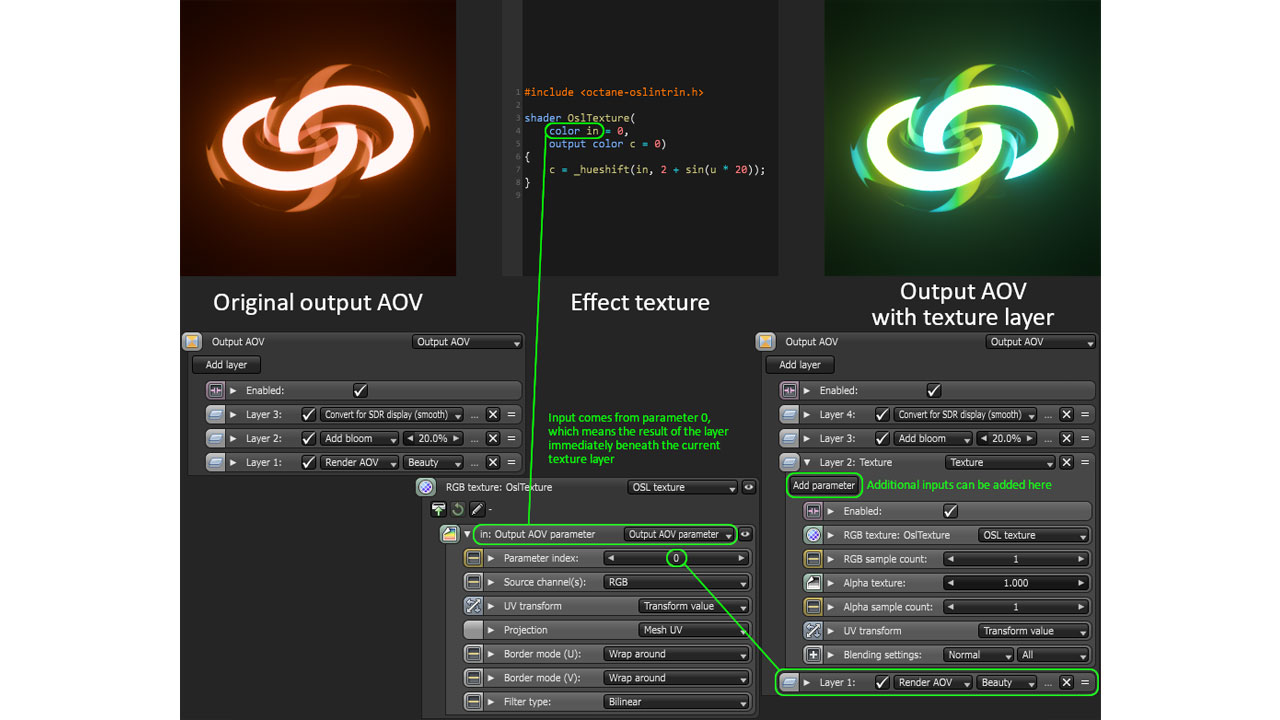
Hardware Accelerated Ray Tracing for Apple M3 GPUs
Experience a significant boost in rendering performance with Octane X 2024.1’s optimized support for ray tracing hardware acceleration on Apple M3 GPUs. This enhancement translates to remarkable speedups, with performance gains ranging from 2x to an impressive 12x in heavily instanced scenes.

New Geometry Pipeline
Explore an enhanced rendering experience with Octane 2024’s new and improved Geometry Pipeline. This overhaul brings a host of benefits, including boosted rendering speeds, reduced memory usage, and the unification of geometry data across CUDA and Metal platforms. Witness a seamless integration of RT ray tracing with ‘RT core-only’ rendering, ensuring optimal utilization of resources for improved performance.
Mixed Platform Network Rendering
Step into network rendering with Octane 2024.1’s revolutionary Mixed Platform Network Rendering feature. This update introduces a unified memory layout, enabling network rendering across both Metal (macOS) and CUDA. For the first time, studios leveraging Octane X for Metal can seamlessly harness the power of near-limitless Windows GPUs as render nodes.
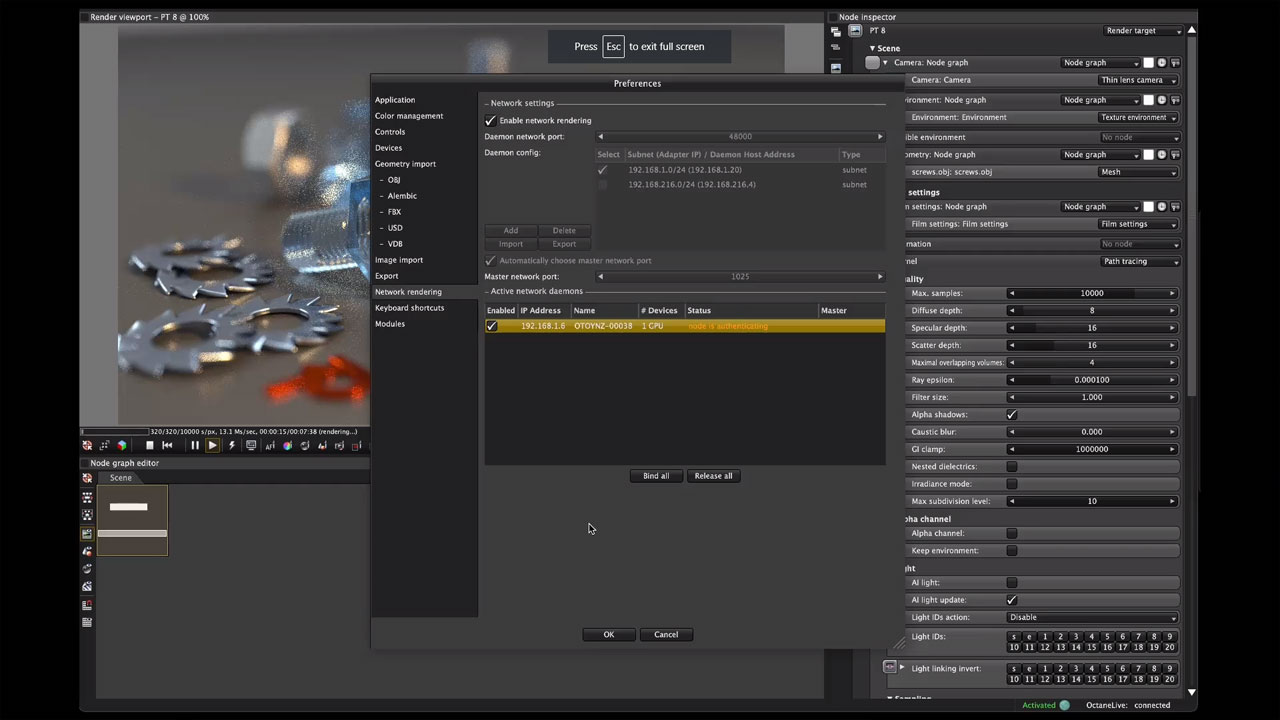
Full Utilization of Ray-Tracing hardware
Octane 2024.1 brings you full usage of ray-tracing hardware. This latest update ensures that all mesh primitives and geometry, from hair to spheres and displacement triangles, fully capitalize on modern hardware’s potential for maximum acceleration. ‘RT core-only’ rendering takes center stage, enhancing speed, stability, and efficiency by minimizing dependencies on system memory and out-of-core geometry. This maximizes the utilization of RT core hardware, streamlining the rendering process and navigating the intricacies of various ray-tracing types with finesse.
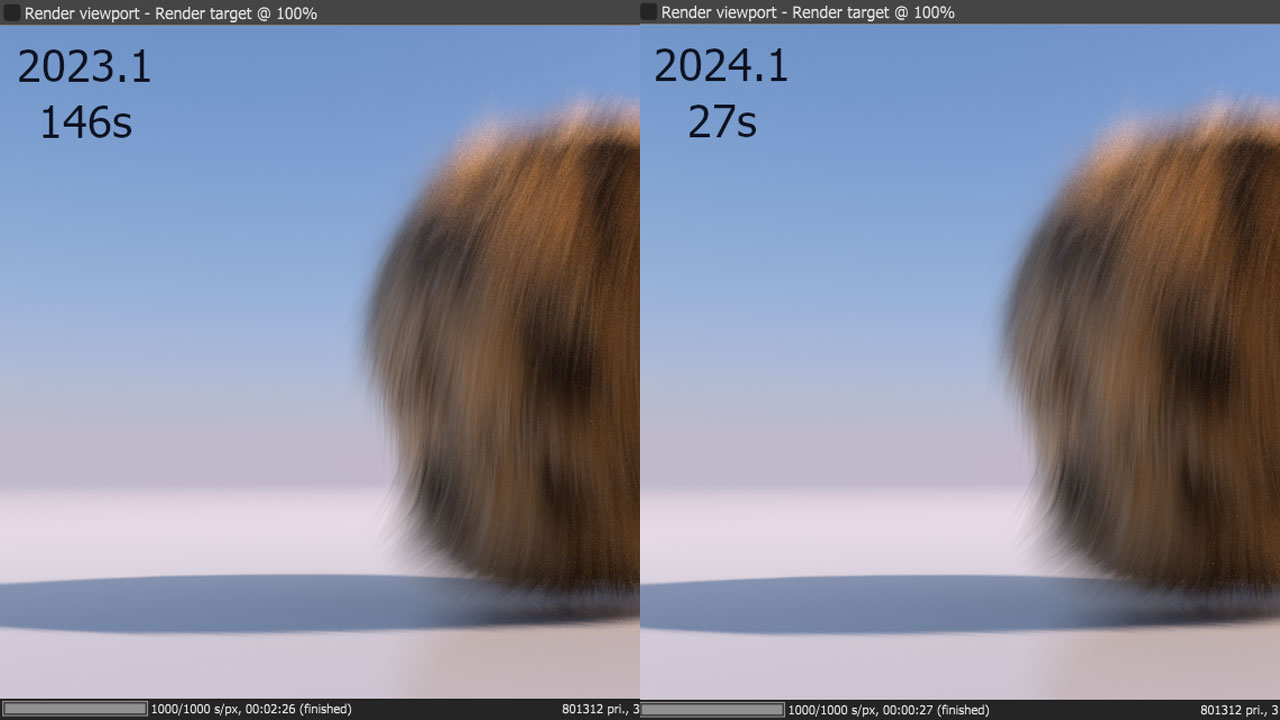
Smaller Memory Footprint for Geometry
Experience the efficiency boost in Octane 2024.1 with a smaller memory footprint for geometry. The introduction of ‘RT core-only’ rendering results in remarkable memory reductions across Windows and Linux platforms. It enhances efficiency and stability not only in Octane Standalone but also in DCC plugin integrations, relieving memory pressure on the host DCC applications.
Other Features in Development for Octane 2024.1
In addition, there is an exciting array of features in development for Octane 2024.1.
- Light Field Baking.
- Brigade Temporal Denoiser.
- Meshlet Texture Streaming.
- Native MaterialX support.
- OctaneGPT: A groundbreaking Language Model service that provides comprehensive assistance within Octane – documentation, tutorials, and even code. For example, OctaneGPT can generate nodes, scripts, and shaders and create interactive scenes and assets from text, voice, and even screen sharing.
- Localized Language support.
- Unreal Engine style decal support in core.
- Rest Position Nodes.
What you can expect in the Octane 2024.x release?
The upcoming Octane 2024.x release is packed with cutting-edge features that elevate your rendering experience. Here is a sneak peek at what you can expect:
- Headless rendering live linking across multiple renderers and engines (Blender, Unreal Engine, Cinema 4D, and standalone).
- Neural Rendering including NeRF, Splats, and generative AI scene nodes.
- Meshlet Geometry Streaming.
- New Render Network Manager for both live and offline GPU workloads.
- Volumetric Live Compositor for Virtual Production and Mixed Reality and Light Field displays.
- Improved BRDF and shader support allows for faster single-sample quality output.
- Improved LensFX system, based on the 2023 framework and 2024 shader graph system for post-processing.
Wrap up
In summary, Chip Render has explored all new features of Octane 2024.1 and other features in development for upcoming versions throughout the year. These updates continue to push boundaries and redefine the landscape of rendering technology. Stay tuned for these upcoming features that promise to enhance your creative journey.
 The best part: You can use render with Octane 2024 with ease on Chip Render Farm.
The best part: You can use render with Octane 2024 with ease on Chip Render Farm.
Join us now and cut your render times several times with just a small investment from $2.9. With Chip Render, you have your own Cloud Workstation and leverage 1/2/4 x GPU RTX 3090 servers for rendering Octane Render projects.

